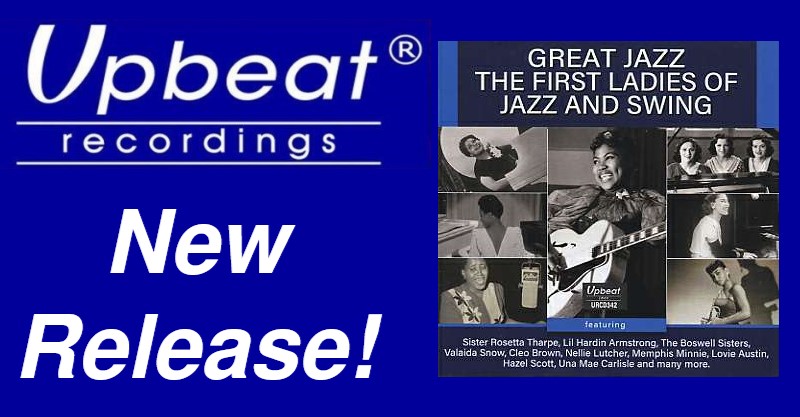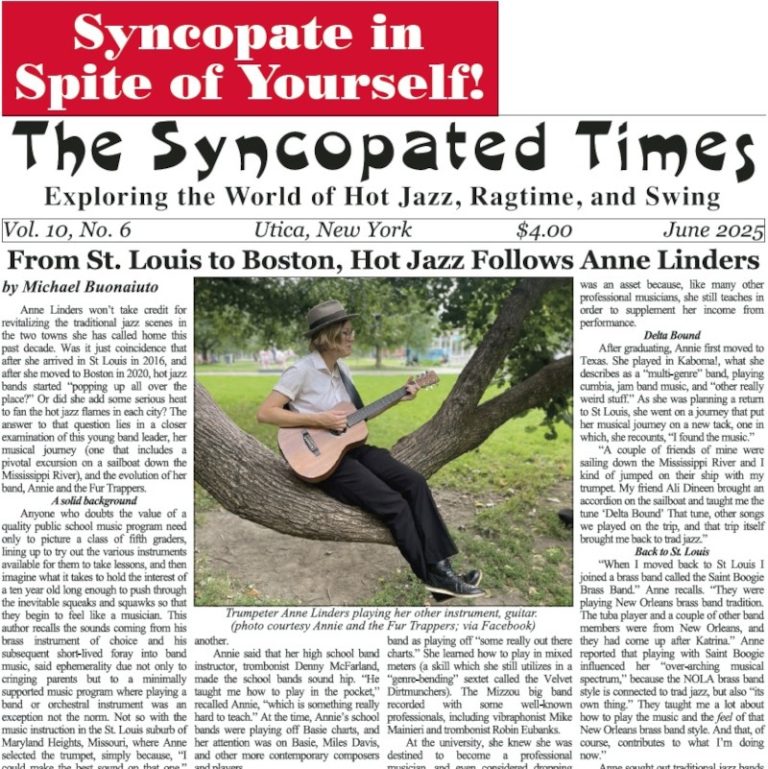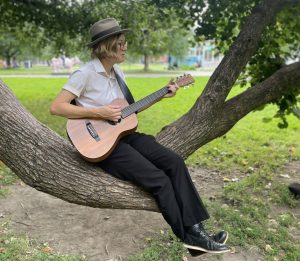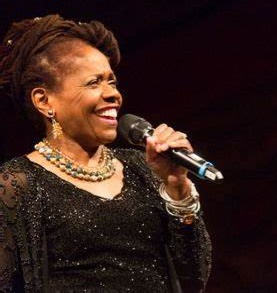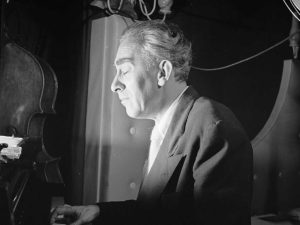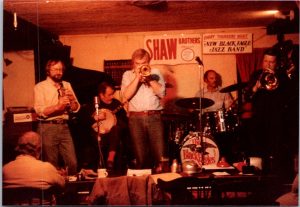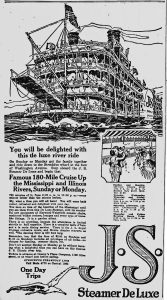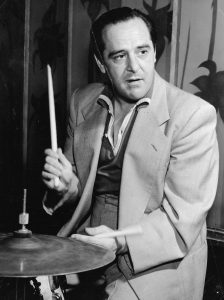The 2022 San Diego Jazz Festival, the first held in person in three years, got underway on Thanksgiving Eve at the newly (since 2019) expanded Town and Country Convention Center in the Mission Valley area of San Diego. While the hotel has been greatly enlarged, the music venues were unchanged from 2019.
I arrived in town a day ahead of time from the West Coast Ragtime Festival in Sacramento and stayed, as usual, at a less expensive—there’s no such thing as inexpensive in California—hotel near the T&C. This extra time gave me a chance to scope out the new facilities. In addition, my reasonable hotel rate included breakfast, which is an extra cost at the T&C.
The festival’s format was similar to what was followed on my two previous visits, in 2018 and 2019. I had viewed the band lineup on the website before leaving home, so I had a good idea of which groups I wanted to see and which I could miss, if necessary, without feeling disappointed. But I made my selections with a pencil so I could make revisions on the fly. Some nineteen bands and/or vocal groups were on the card. There were two late cancellations due to illness among their members—Grand Dominion and Titanic. I was looking forward to seeing both of them. No other bands were booked as replacements, perhaps because there wasn’t enough time to do so.
I did see both opening bands on Wednesday evening—High Society and Sue Palmer’s Motel Swing. The latter has a new vocalist, Liz Ajuzie, who has a powerful voice and very good intonation. I don’t remember a previous singer, but Liz fits in very well with this band’s style and book.
On Thanksgiving evening, following the optional traditional dinner in one of T&C’s new eateries, the festival began in earnest in two of the venues, with four sets in the Pacific Ballroom and three in T&C Ballroom A (this space can be divided into four separate rooms, and all were used starting on Friday). Over the weekend, a total of 134 sets were scheduled—50 on Friday, 59 on Saturday, and 25 on Sunday, when the festival wraps up at 6:30 PM.
Several sets were devoted to dance instruction, and six shorter (45 minutes each) formed a longer continuous swing showcase. Otherwise, sets ran an hour with 15 minutes before the next one in the same room began. Sets were also scheduled to begin 15 minutes apart, making it possible to catch parts of two concurrent sets. I did that several times so as not to miss entirely any bands that I especially wanted to see and to sample others that I might have had to overlook. On top of all this, two smaller rooms were set up for solo pianists. Fifteen pianists played twenty 45-minute sets in the morning and afternoon, four of them two sets each except Virginia Tichenor who had three. I had laid out a full band schedule for myself and, unfortunately, didn’t make it to any piano sets, but did see several pianists who also played in a band.
Several bands, all of which were quite good, are essentially festival bands in that their members are drawn from all over the country and thus don’t play together regularly. These include Cheryl’s Vintage Jazz, Katie (Cavera) and the Lost Boys, the New Orleans Night Owls and Michael Gamble’s Rhythm Serenaders. The Owls have recorded two CDs, remotely, in the past year or two. I had seen them, with a few different sidemen, at the Bix Beiderbecke Festival in August; they were founded and are led by drummer Hal Smith. Somehow Hal manages to find the most obscure music from early New Orleans and the West Coast Dixieland revival of the ’50s and ’60s, some of which he experienced firsthand in his youth. I attended most of this band’s nine sets and perhaps 80 percent of what they played was unfamiliar to me. But that’s not a complaint.
Special mention is warranted for Nathan Tokunaga, 15-year-old clarinetist from the Bay Area who subbed for Pieter Meijers in Sierra 7, which is essentially the replacement for High Sierra that disbanded not long after the 2019 San Diego festival. I was sorry to see them go, but the sequel is also top-notch. Pieter, we were told, is recovering from bypass surgery and is not yet able to resume playing. Keep your eyes and ears on this brilliant young man. He is studying with Clint Baker, a good omen.
Another young performer with a bright future, which in fact has already begun, is multi-instrumentalist Riley Baker. The son of another multi-instrumentalist, Clint Baker, he turned 22 the day after the festival ended and has already become a fixture at festivals. He’s a senior majoring in trombone performance at Cal State Northridge. His twin sister Ramona has also become a well-known figure, but in the music of an earlier era. She was at West Coast Ragtime for at least the past two years that in-person festivals were held.
I should also cite Dan Barrett’s son Andrew, who acquitted himself well with the Night Blooming Jazzmen. Dan was also on hand this weekend, but on trumpet instead of the usual trombone, playing in Michael Gamble’s band and with Carl Sonny Leyland and Friends. I had previously seen Dan only as a trombonist in New York, and in that capacity I place him in a category with Jack Teagarden and Tommy Dorsey.
With Riley and Andrew, the apple doesn’t fall far from the tree.
One thing I noticed this year was an increase in the number of dancers, not during the Saturday evening dance competition but during the regular band sets. Still, most of these dancers were from the same age categories of the general audience.
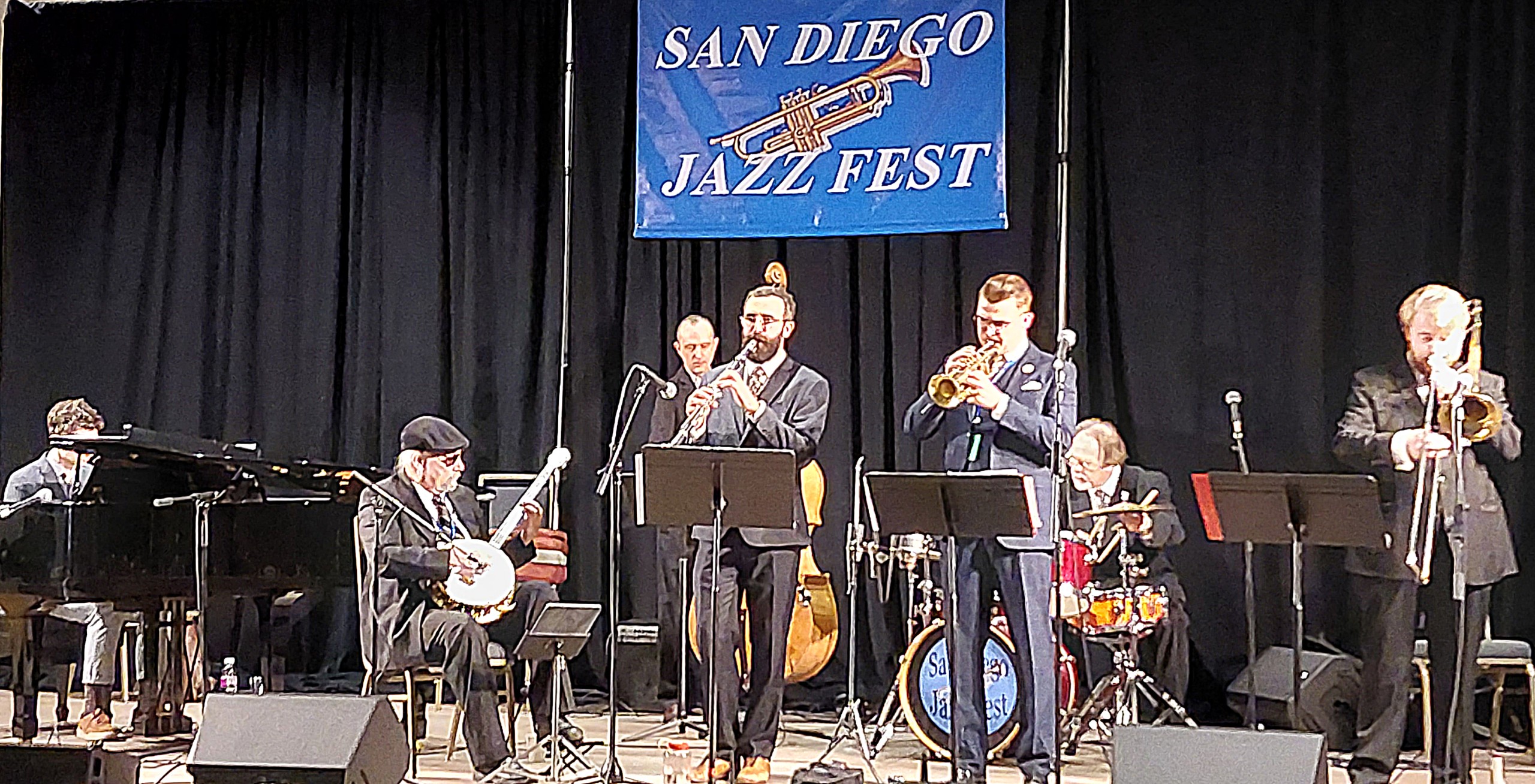
Which bands did I like best? The New Orleans Night Owls and Sierra 7 are about tied for first place; I attended most of both bands’ sets (they unfortunately were twice scheduled opposite each other). I also liked Katie and the Lost Boys and Cheryl’s Vintage Jazz. Given the roster in both, I expected to be well pleased, and was. I sampled most of the local bands and judged them at least satisfactory, if not better. I skipped a few that I had seen at previous festivals whose music didn’t grab me; I will not name them.
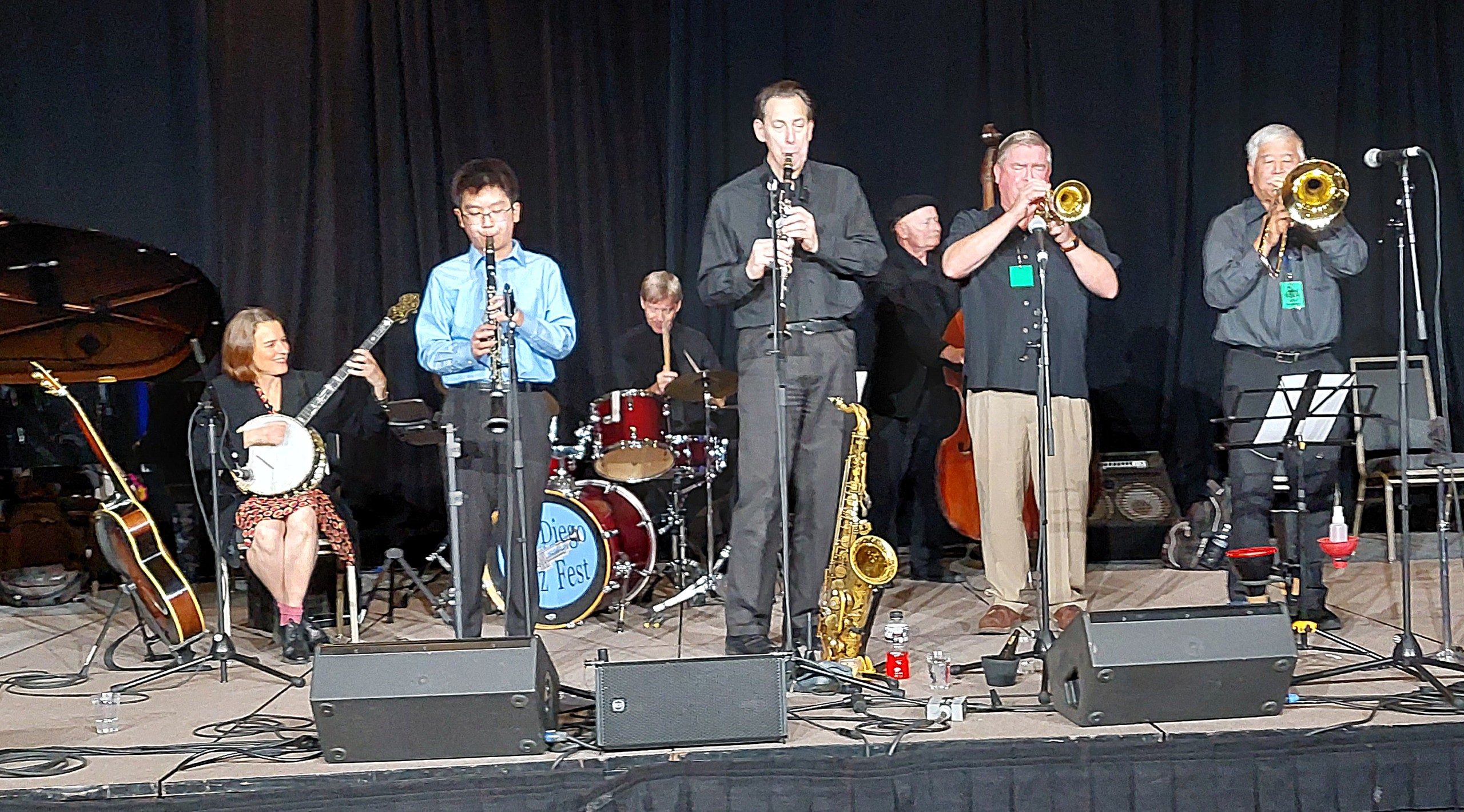
There were a few spontaneous highlights in individual sets (and I may have missed others in sets I did not attend): Jim Richardson of Night Blooming Jazzmen playing two saxes simultaneously, and Nathan Tokunaga’s solo with Sierra 7 on “Stardust.”
The traditional 90-minute finale was anti-climactic in that many performers, and much of the audience, had departed. Katie Cavera did her best to keep the show together. Incidentally, Katie during the weekend played a banjo she recently acquired that had once belonged to Barney Kessel.
Fellow TST correspondent Shelly Gallichio was at the festival and may share her perspective with us, possibly in this issue. The dates for 2023 have been announced: November 22-26. The venue was not announced, although the program book mentioned that room reservations at T&C could be made immediately. I heard complaints about the hotel from a few regular attendees, mainly the high cost and limited on-site food selections. I agree with that evaluation, but I had investigated other options before leaving home and planned accordingly. Having my bicycle with me—it has been to nearly as many festivals as I have!—allowed me to pursue those choices with relatively little sacrifice of music sets. It also widened my range of lodging options and freed me from having to rent a car or use public transportation (although the latter is actually very convenient at this festival).
In all, I give the San Diego Jazz Festival a very high rating. Kudos to Artistic Director Hal Smith and Executive Director Bill Adams and his staff and volunteers for a job well done.
Bill Hoffman is a travel writer, an avid jazz fan and a supporter of musicians keeping traditional jazz alive in performance. He is the concert booker for the Tri-State Jazz Society in greater Philadelphia. Bill lives in Lancaster, PA. He is the author of Going Dutch: A Visitors Guide to the Pennsylvania Dutch Country, Unique and Unusual Places in the Mid-Atlantic Region, and The New York Bicycle Touring Guide. Bill lives in Lancaster, PA.




